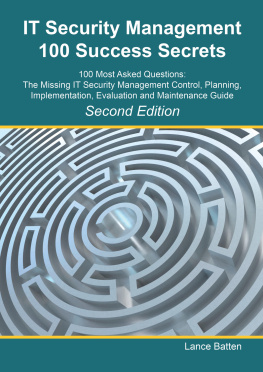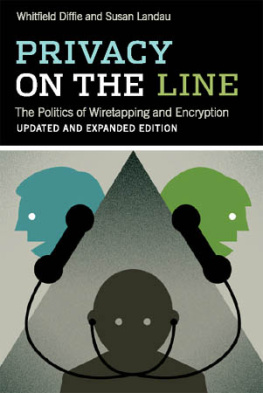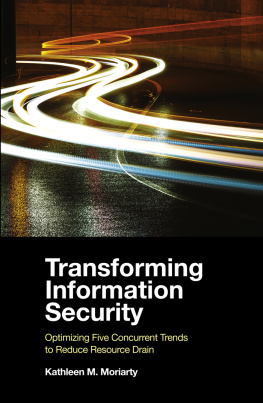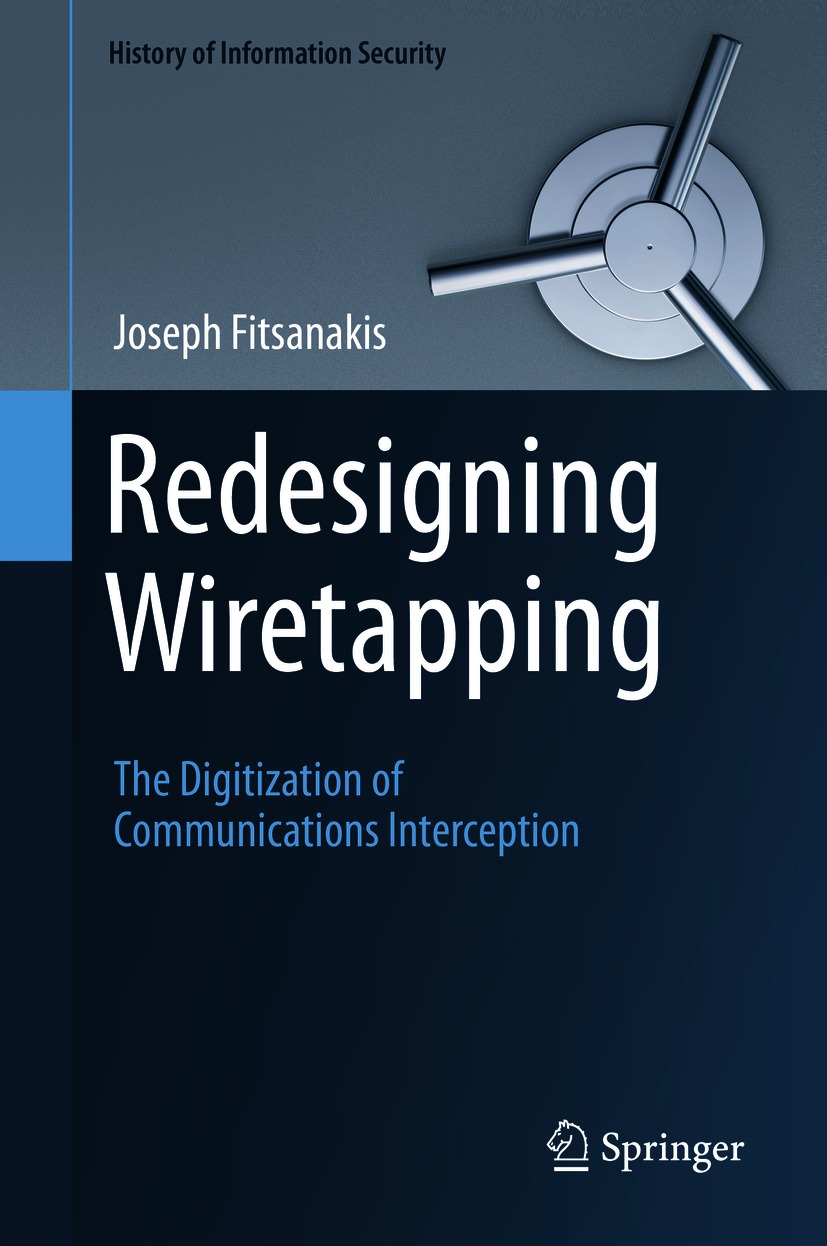History of Information Security
Series Description
The Springer book series History of Information Security publishes monographs about all aspects of the history of cryptology, signals intelligence, computer security, and information assurance, focusing on the interplay between technological change and organizational requirements. There are no limits in time period monographs dealing with information assurance and warfare in antiquity are as welcome as those dealing with cybercrime but subjects should be clearly defined, limited, and treated comprehensively. Prospective authors are invited to submit proposals or manuscripts, aimed at academic and/or non-expert audiences.
Series Editor
Karl de Leeuw (Amsterdam)
Advisory Board
John F. Dooley (Knox College)
Joseph Fitsanakis (Coastal Carolina University)
Ioanna Iordanou (Oxford Brookes University)
Benedek Lang (Budapest University of Technology)
Jean-Jacques Quisquater (Universit catholique de Louvain)
Betsy Rohaly Smoot (Independent Scholar / Retired NSA Historian)
John Tucker (Swansea University)
More information about this series at http://www.springer.com/series/16513 Joachim von zur Gathen (Bonn-Aachen International Center
for Information Technology and Universitt Bonn)
Joseph Fitsanakis
Redesigning Wiretapping
The Digitization of Communications Interception
1st ed. 2020

Logo of the publisher
Joseph Fitsanakis
Intelligence and National Security Studies Program, Coastal Carolina University, Conway, SC, USA
ISSN 2662-7558 e-ISSN 2662-7566
History of Information Security
ISBN 978-3-030-39918-4 e-ISBN 978-3-030-39919-1
https://doi.org/10.1007/978-3-030-39919-1
Springer Nature Switzerland AG 2020
This work is subject to copyright. All rights are reserved by the Publisher, whether the whole or part of the material is concerned, specifically the rights of translation, reprinting, reuse of illustrations, recitation, broadcasting, reproduction on microfilms or in any other physical way, and transmission or information storage and retrieval, electronic adaptation, computer software, or by similar or dissimilar methodology now known or hereafter developed.
The use of general descriptive names, registered names, trademarks, service marks, etc. in this publication does not imply, even in the absence of a specific statement, that such names are exempt from the relevant protective laws and regulations and therefore free for general use.
The publisher, the authors and the editors are safe to assume that the advice and information in this book are believed to be true and accurate at the date of publication. Neither the publisher nor the authors or the editors give a warranty, expressed or implied, with respect to the material contained herein or for any errors or omissions that may have been made. The publisher remains neutral with regard to jurisdictional claims in published maps and institutional affiliations.
This Springer imprint is published by the registered company Springer Nature Switzerland AG.
The registered company address is: Gewerbestrasse 11, 6330 Cham, Switzerland
Preface
The concept of informatization was introduced in political research in 1977. In the ensuing 43 years, scholars have become increasingly cognizant of the powerful interaction between information technology and social development. This research follows in the footsteps of this increased awareness and explores the sociotechnical impact of digitization on information security andby extensionprivacy.
This book seeks to contribute to a wider body of literature in information security that desires to provide meaningful answers to the following questions: (1) What sociotechnical trends have been evident in the recent history of information-security policy in the United Kingdom and the United States? (2) What particular political visions do these trends seem to favor and what do they appear to suggest for the future of information security in the West? (3) What is the importance of digital information security for practices of policing, both by governmental decision centers and commercial bodies?
To answer these questions, this book examines the historical emergence of two legislative frameworks: the Communications Assistance for Law Enforcement Act (CALEA), enacted by the United States Congress in 1994, and the Regulation of Investigatory Powers Act (RIPA), enacted by the British Parliament in 2000. The two Acts, which remain active to this day, make it mandatory for telecommunications service providers to, among other things, ensure that their customers communications can be intercepted by law enforcement and security agencies, whose interception capabilities were seriously hampered by the digitization and deregulation of telecommunications after 1984.
The project rests on previously unpublished qualitative data on RIPA and CALEA. These have been acquired through open-source, restricted, or leaked government and industry reports on the subject, as well as through over 40 in-depth interviews with some of the protagonists representing different sides in the negotiations over RIPA and CALEA, nearly 20 years ago. The development of communications interception as a component of information security is thus examined historically within the context of complex relationships between political actors, such as national policy experts and government advisors, state and corporate decision-makers, and members of regulatory bodies.
Joseph Fitsanakis
Conway, SC
December 2019
Contents
Springer Nature Switzerland AG 2020
J. Fitsanakis Redesigning Wiretapping History of Information Security https://doi.org/10.1007/978-3-030-39919-1_1
1. Introduction
Joseph Fitsanakis
(1)
Intelligence and National Security Studies Program, Coastal Carolina University, Conway, SC, USA
In 1998 I was living in a southern region of the United States. The Internet had just begun to emerge as a civilian utility at that time, with only about 20% of American households accessing the World Wide Web through dial-up services. Few people outside of government or academia used email, while cellular-based text messaging was almost non-existent. Cellular telephonesthe unwieldly ancestors of todays mobile phoneswere around, but they were few and expensive to use, especially while roaming. Landline telephony was therefore still the dominant form of telecommunication. A small number of politicians had just begun to sense the dawn of the upcoming telecommunications revolution and were contemplating the future of the so-called information superhighway. Known also as the inforbahn, the term signified a proposed high-speed telecommunications system that would connect the nation with fiber optic networks and lead it to the information society of the twenty-first century.
Late one February night, someoneseemingly a random strangercalled my landline telephone and left a message on my answering machine, in which he threatened to come to my residence and hurt me. The caller did not seem to know who he was contacting. He was almost certainly a bored teenager using his parents telephone line to prank a random subscriber. It was something like the pre-Internet version of cyber-bullying. I was not especially concerned, but I was not about to take any chances, so I contacted the police to report the incident. When a police officer came to my house, I took her to the answering machinea bulky stand-alone accessory that users attached to the telephone appliance in order to record messages from callersand replayed her the threatening message. I imagined that the officer would resolve my case that same evening. All she had to do was complete a one-page report and file it at her precinct station. A junior detective would then contact the designated law enforcement point-of-contact of the local telephone exchange carrier and request a transcript of the call data for my subscriber line. Less than half an hour later, the telephone company would forward the detective a list of telephone numbers that contacted my number during a prescribed period. It would then be an easy task to match the timestamp of the incriminating message left on my answering machine with the call data supplied by the local telephone exchange carrier, and isolate the incriminating number. Then, again with the help of the local telephone exchange, the detective would identify the name and address of the incriminating subscriber before sending around a police officer to scold the bored teenager. ThatI was certainwould be the end of the matter.










